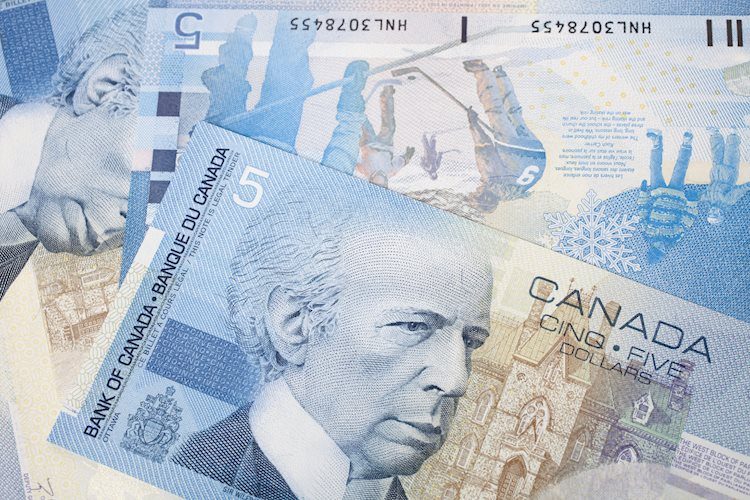- Canadian Dollar sees further downside as Loonie loses oil support.
- Canada Building Permits also slid to a five-month low.
- Loonie down a full percent for the week.
The Canadian Dollar (CAD) is extending the week’s decline, getting pushed down as broader markets favor the US Dollar (USD) and Crude Oil bids decline into four-month lows.
Last week’s rally into the close fueled by investors heralding the end of the Federal Reserve’s (Fed) rate hike cycle is hitting a wall this week, and elation is being replaced with trepidation as fears of a global economic slowdown and ongoing geopolitical concerns weigh on risk appetite.
Daily Digest Market Movers: Canadian Dollar heading back for the bottom as investors extend Greenback bets
- CAD set for a third consecutive down day, backsliding 1.25% from Monday’s high bids.
- Broad-market USD pickup is seeing the Loonie get pushed back down after a brief recovery from 13-month lows.
- Canadian Building Permits declined 6.5% MoM in September, erasing August’s print of 4.3% (revised upward from 3.4%).
- Canada Housing Starts next week will round out the housing development picture.
- Bank of Canada Senior Deputy Governor Carolyn Rogers to speak about financial stability at an Advocis event in Vancouver on Thursday.
- The CAD is losing fundamental support as risk aversion flows pick up the US Dollar and West Texas Intermediate (WTI) Crude Oil fumbles barrel bids.
- WTI Crude Oil down over 9% from November’s high.
Technical Analysis: Canadian Dollar heading back into the floorboards, sees 1.38 against US Dollar
The USD/CAD has returned to the 1.3800 handle in Wednesday trading as the pair eases back, extending Greenback gains into a third straight day.
After seeing a technical bounce from the 50-day Simple Moving Average (SMA) near 1.3630 in confluence with a soft touch of the rising trendline from July’s low bids near 1.3100, the USD/CAD is set for a fresh challenge of 13-month highs at the 1.3900 handle. Multi-year highs remain locked behind 2022’s October peak of 1.3978.
Long-term trend technical support sits at the 200-day SMA currently rising into 1.2500, far below price action, and indicator traders will note that the Moving Average Convergence-Divergence (MACD) oscillator is still flashing short-side warnings after confirming a signal moving average crossover last week.
USD/CAD Daily Chart
Canadian Dollar price today
The table below shows the percentage change of Canadian Dollar (CAD) against listed major currencies today. Canadian Dollar was the weakest against the Euro.
| USD | EUR | GBP | CAD | AUD | JPY | NZD | CHF | |
| USD | -0.06% | 0.07% | 0.33% | 0.36% | 0.33% | 0.30% | -0.06% | |
| EUR | 0.06% | 0.13% | 0.40% | 0.41% | 0.40% | 0.36% | -0.01% | |
| GBP | -0.04% | -0.12% | 0.28% | 0.30% | 0.27% | 0.24% | -0.10% | |
| CAD | -0.34% | -0.41% | -0.28% | 0.02% | 0.00% | -0.05% | -0.40% | |
| AUD | -0.36% | -0.42% | -0.30% | -0.02% | -0.02% | -0.05% | -0.43% | |
| JPY | -0.34% | -0.40% | -0.30% | 0.02% | 0.00% | -0.06% | -0.39% | |
| NZD | -0.30% | -0.36% | -0.22% | 0.03% | 0.06% | 0.04% | -0.36% | |
| CHF | 0.06% | 0.00% | 0.12% | 0.39% | 0.42% | 0.39% | 0.36% |
The heat map shows percentage changes of major currencies against each other. The base currency is picked from the left column, while the quote currency is picked from the top row. For example, if you pick the Euro from the left column and move along the horizontal line to the Japanese Yen, the percentage change displayed in the box will represent EUR (base)/JPY (quote).
Interest rates FAQs
Interest rates are charged by financial institutions on loans to borrowers and are paid as interest to savers and depositors. They are influenced by base lending rates, which are set by central banks in response to changes in the economy. Central banks normally have a mandate to ensure price stability, which in most cases means targeting a core inflation rate of around 2%.
If inflation falls below target the central bank may cut base lending rates, with a view to stimulating lending and boosting the economy. If inflation rises substantially above 2% it normally results in the central bank raising base lending rates in an attempt to lower inflation.
Higher interest rates generally help strengthen a country’s currency as they make it a more attractive place for global investors to park their money.
Higher interest rates overall weigh on the price of Gold because they increase the opportunity cost of holding Gold instead of investing in an interest-bearing asset or placing cash in the bank.
If interest rates are high that usually pushes up the price of the US Dollar (USD), and since Gold is priced in Dollars, this has the effect of lowering the price of Gold.
The Fed funds rate is the overnight rate at which US banks lend to each other. It is the oft-quoted headline rate set by the Federal Reserve at its FOMC meetings. It is set as a range, for example 4.75%-5.00%, though the upper limit (in that case 5.00%) is the quoted figure.
Market expectations for future Fed funds rate are tracked by the CME FedWatch tool, which shapes how many financial markets behave in anticipation of future Federal Reserve monetary policy decisions.
Read the full article here

